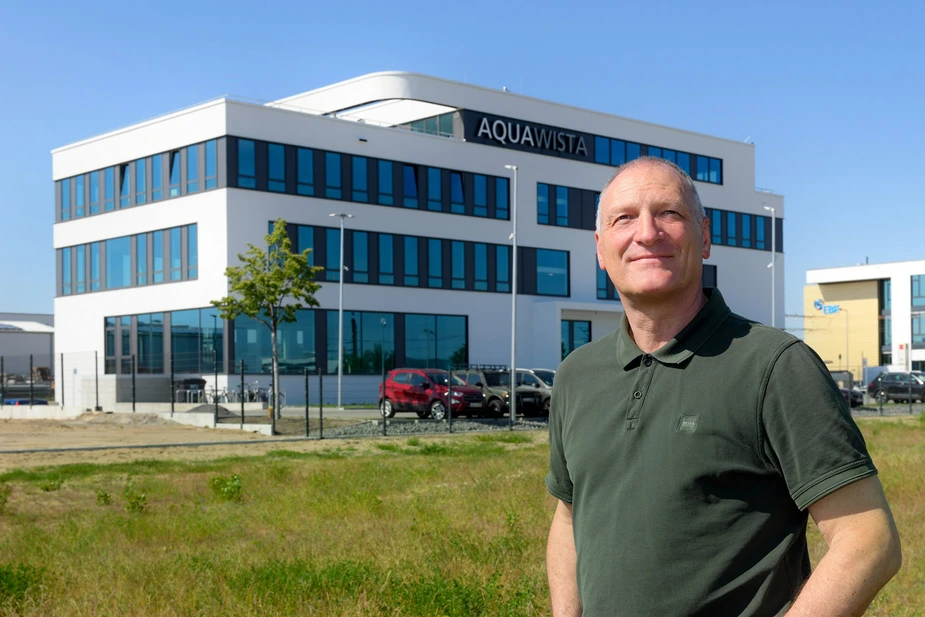Environmentally friendly construction
The demands to energy-efficient building are now also increasing in the industrial construction sector
Earlier this year, the public debate on whether single-family homes are a sensible way of supplying housing has shifted the focus to an aspect of sustainability that typically gets little attention: land consumption. Each year between 1992 and 2018, an average of 178 square kilometres, that is, an area of 13.4 by 13.4 kilometres, have been concreted over with buildings or transportation infrastructure. This is something Jens Wollschläger cares about deeply. He is the head of the Berlin-Brandenburg branch of the company Freyler-Industriebau.
For him, sustainable construction begins with good planning: Only use the building space you need to accommodate the desired functions. “Our main task is to analyse the client’s need and to ask them: Do you really need that?,” says the professionally trained architect. It is then a matter of developing intelligent concepts with everyone who will have their workplace in the new building.
One aspect of this is to structure the building wisely. “The more playful and compartmentalised the building is, the more energy it requires, during construction as well as when it’s in operation,” explains Wollschläger. Another aspect is to consider later potential conversions early on. Not every office space will be needed in five years—something the pandemic made quite clear. It is also important to facilitate flexibility by designing the building’s basic structure and the supporting structure in a way that the interior structure and usage can be changed.
When it comes to implementation, thermal insulation and building technology are the most important elements for improving sustainability. The building’s exterior must protect against the cold in winter and against heat in increasingly hot summers. Heating, ventilation, and air conditioning systems can take over what the building’s exterior can’t manage. Another important strategy in commercial construction is to use waste heat from production processes for heating, water heating, and also cooling.
Thermal insulation and eco-friendliness of façades strongly depend on the material their made of. Glass façades are widespread and popular but a challenge in terms of energy. While they can be had at a very high quality, producing them is expensive. Wood is often cited as an alternative—both for construction as well as façades and walls. It’s attractive being a renewable raw material, but it has its limits above certain building sizes. The only option for industrial and commercial buildings at the moment are the prefabricated sandwich panels made of sheet metal with a foam core—whose manufacturing is also not ideal.
To sum up: in order to keep operating costs down, one has to invest more in construction. The more modern the systems, the more expensive they are. In the end, it’s planners like those from Freyler that make sure it pays off—within the limits of possible forecasting of energy prices. The public sector is creating incentives to match: Funding programmes are supporting home builders in achieving sustainability goals. There are also many certificates for certain levels of sustainability. According to Wollschläger, there isn’t a clear standard: “For us, in commercial construction, the standards given out by KfW Bank [a large German development bank] are decisive because their funding programmes are popular and tied to adhering to certain energy standards.”
The company Freyler itself moved into a new building on Gross-Berliner Damm—purpose-built but for different owner. The company now pays rent there. In terms of sustainability, the building has a good standard but nothing more, he says. This is especially true since the guidelines were further tightened in November 2020. Doing less is becoming more and more difficult, according to Wollschläger.
Outdoor areas should also not be ignored. Ample and targeted green areas, for example, make sure rainwater has enough space to seep off. This can also be used on the building itself. Green roofs are already a common feature of many commercial buildings. The effect: better thermal insulation and thus a better micro climate. Additionally, it makes rainwater seep off more slowly, making it easy for the ground to take it in. Similar effects can be achieved with green façades, too.
What happens when a building’s current purpose has been fulfilled? Repurposing and refurbishing must be examined for every project on a case-by-case basis, says Wollschläger. “On the one hand, considerable energy has already been invested. On the other hand, removal and disposal are no less problematic and also costly.” He also calls to be mindful of cultural aspects, in the sense of appreciating what people have built. This, too, is an element of sustainability.
By Uta Deffke for Adlershof Journal
